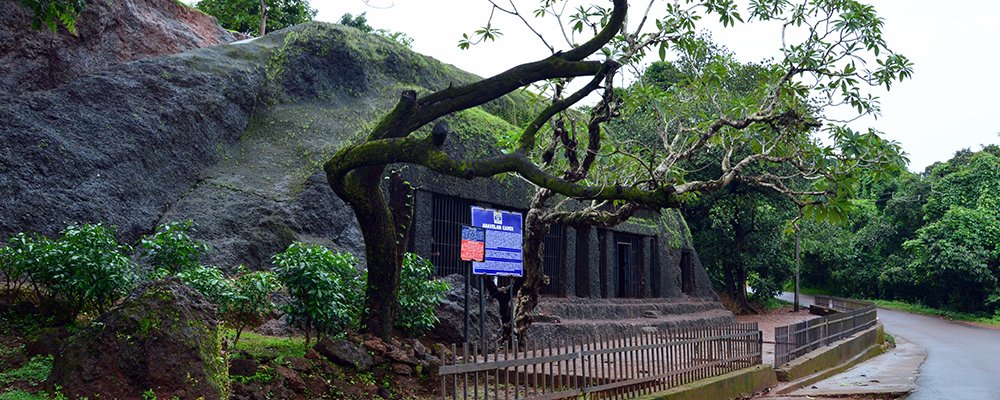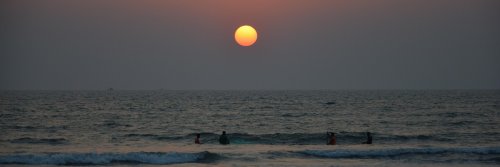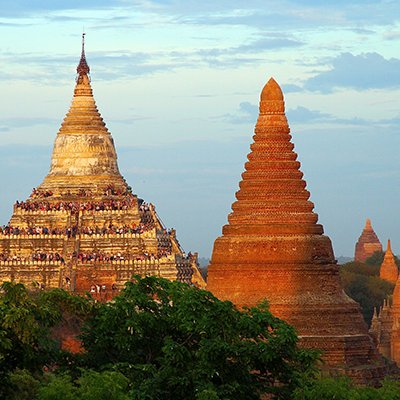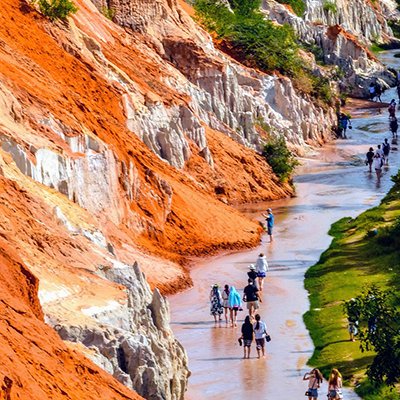In our continuing series about the Indian state of Goa, the Wise Traveller takes a look at some of the hidden gems that you can enjoy away from the beaches.
Arvalem Waterfall And Caves
The magical Arvalem Waterfall tucked away in off-beaten Arvalem near Sanquelim, North Goa is a stunner. If it’s a break from the world you are after, spend an immersive afternoon in the wilds, and you’re more than likely to be on your own. If you’re feeling adventurous, climb the steps to the top for a view over the 20-metre waterfall.
Nearby, you can explore the centuries-old Rudreshwar Temple dedicated to Lord Shiva, while the Arvalem Caves, carved into the rock, date back to the 6th Century. The caves, rumoured to have been carved by Buddhist monks, blend Buddhist and Shaivite influences, as well as Brahmi and Sanskrit inscriptions.

Arambol Sweet Water Lake
Arambol Sweet Water Lake, officially named Vagkolam, is a freshwater lake near Kalacha Beach in Arambol, surrounded by greenery and often visited for its hot springs. Lying 20 minutes from Arambol Beach and close to the famous market, the secluded lake is renowned for its sunsets and offers a peaceful moment away from the tourist hustle and bustle.
Corjuem Fort
Corjuem is one of only two existing inland forts but one with vistas from its ramparts of stunning swathes of Goan countryside. Located across the Mapusa river from the village of Aldona, the fort was built in 1550 and was owned by the Bhonsle rulers of Sawantwadi.
While having strategic importance down the centuries, it is also packed with legend. According to myth, Ursula of Lancastre disguised herself as a man and set out to see the world. In this guise, she ended up as a soldier and was posted as one of the defenders of this fort. Her masquerade went undetected until she was caught as a prisoner of war.
Shiva Temple, Tambdi Surla
Goa is steeped in history and has taken influences from all points of the compass throughout the ages. It is not surprising, then, that one of the earliest, historical and architectural gems is tucked away in the Bhagwan Mahavir Wildlife Sanctuary, around 70km from Panjim.
This architectural marvel dedicated to Mahadev dates back to the 12th Century. The Shivite temple has survived the many perils of invaders and continues to amaze. Its intricate carving out of basalt stone, set against the greenery, creates a dramatic backdrop. The temple still functions, and locals and devotees make their way to pay respects to the deity.

Cotigao Wildife Sanctuary
The second-largest and most accessible wildlife haven is the Cotigao Wildlife Sanctuary on the Goa-Karnataka border. Established in 1968, the 86sq km stretch of woodland boasts impressively tall trees that reach up to 30m.
Visitors can spot flying squirrels, slender loris, Indian pangolin, mouse deer, four-horned antelope, and white-bellied woodpeckers. The more observant may be lucky to catch a glimpse of gazelles, sloth bears, porcupines and panthers. One unique offering is the use of one of the six tree-top lookout posts 25m above ground and overlooking the watering holes.
Dudhsagar Waterfalls
Standing over 300m high, Dudhsagar Falls offers dramatic moments as the Mandovi River flows over, having risen from the Deccan Plateau in Karnataka and winds its way through the Western Ghats. Dudhsagar, which translates as Sea of Milk, is a four-tiered waterfall located 60km from Panjim. Visitors will delight in the rich flora, fauna and scenery of the local area.

Basilica of St. Francis Xavier’s Resting Place
The Basilica of Bom Jesus, located in Old Goa, is one of India’s most revered and historically significant churches. A UNESCO World Heritage Site, it stands as a magnificent example of Baroque architecture. It is also the final resting place of St. Francis Xavier, the renowned Jesuit missionary who spread Christianity across Asia in the 16th Century.
Construction of the basilica was completed in 1605. The exterior exudes old-world charm, while the interior dazzles visitors with intricate gilded altars, marble flooring inlaid with precious stones, and detailed carvings reflecting the opulence of Portuguese craftsmanship.
The main attraction is the remains of St. Francis Xavier, preserved in a silver casket displayed in a glass case in the mausoleum to the right of the main altar. Every ten years, the saint’s relics are exposed for public veneration, drawing pilgrims and tourists from around the globe.
 Andy Probert writes about global travel news, airlines, airports, and business, and has appeared internationally in both print and digital formats.
Andy Probert writes about global travel news, airlines, airports, and business, and has appeared internationally in both print and digital formats.















